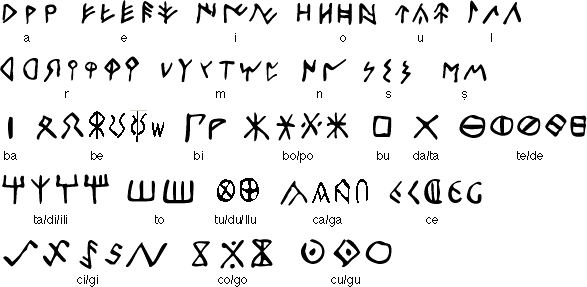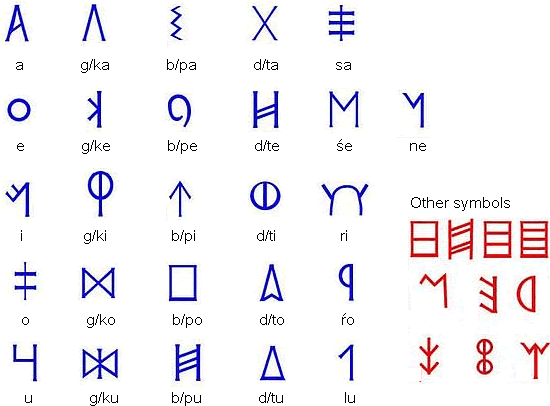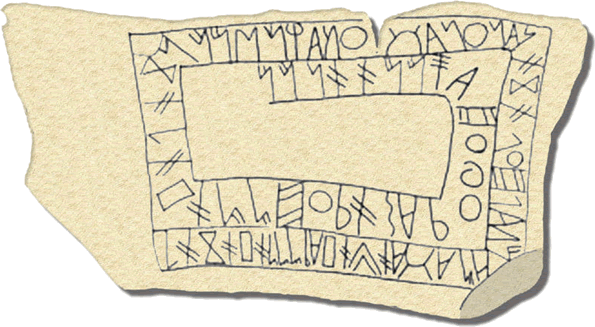In the 3rd century BC the Iberian peninsula was invaded first by Carthage, then by the Romans. Thereafter, the Iberian scripts and the languages they were used to write gradually disappeared.
Notable features
- The Iberian script is mainly syllabic but also partly alphabetic.
- There were two version of the Iberian script - one used in southern France, Catalonia and Castile, the other used in Andalusia and Mursia. The main difference between these versions is the shapes of the glyphs and direction in which they were written. The northern version was written from left to right, while the southern version was written from right to left.
Used to write:
Iberian, a non-Indo-European language which has so far resisted decipherment, and Lusitanian, an Indo-European language possibly related to the Celtic languages. A modified version of the Northern Iberian script was used to write Celtiberian, a Celtic language. The most recent inscriptions in these language date from the 2nd century AD and they are thought to have become extinct by then.Northern Iberian script

Southern Iberian script

Southwest Script
This Southwest Script was used in southwestern Iberia to write an unknown language which is usually identified as Tartessian. A total of 75 inscriptions in this script dating from between the 7th and 5th centuries BC have been found in the Algarve and southern Alentejo in Portugal, and in southern Extremadura and western Andalucia in Spain. The script is also known as the Southwestern Script, the Southwest Paleohispanic script, the Tartessian Script or the South Lusitanian Script.The Tartessian language, which is also known as Southwestern or South Lusitanian, is an extinct language spoken in the southwestern Iberia. The name Tartessian comes from Tartessos, a city that once stood at mouth of the Guadalquivir River in Andalusia. Tartessian was possibly a Celtic language, though this is uncertain.
Notable features
- Type of writing system: syllabary
- Direction of writing: variable - right to left in horizontal lines, boustrophedon or spiral
- Used to write: Tartessian (?)
A possible southwestern signary

Based on information from Rodríguez Ramos, Jesús (2000): «La lectura de las inscripciones sudlusitano-tartesias»
Sample texts
Northern Iberian Script

Lead plaque from Ullastret [source]
Southern Iberian Script
Southwest Script
Links
Information about the Iberian scripts and languageshttp://en.wikipedia.org/wiki/Iberian_scripts
http://en.wikipedia.org/wiki/Northeastern_Iberian_script
http://en.wikipedia.org/wiki/Southeastern_Iberian_script
http://en.wikipedia.org/wiki/Paleohispanic_languages
http://en.wikipedia.org/wiki/Iberian_language
http://en.wikipedia.org/wiki/Lusitanian_language
http://en.wikipedia.org/wiki/Tartessian_language
Iberian Epigraphy Page, by Jesús Rodríguez Ramos - details of the scripts and languages of pre-Roman Iberia (Spain and Portugual): http://www.webpersonal.net/jrr/


No comments:
Post a Comment
Note: Only a member of this blog may post a comment.